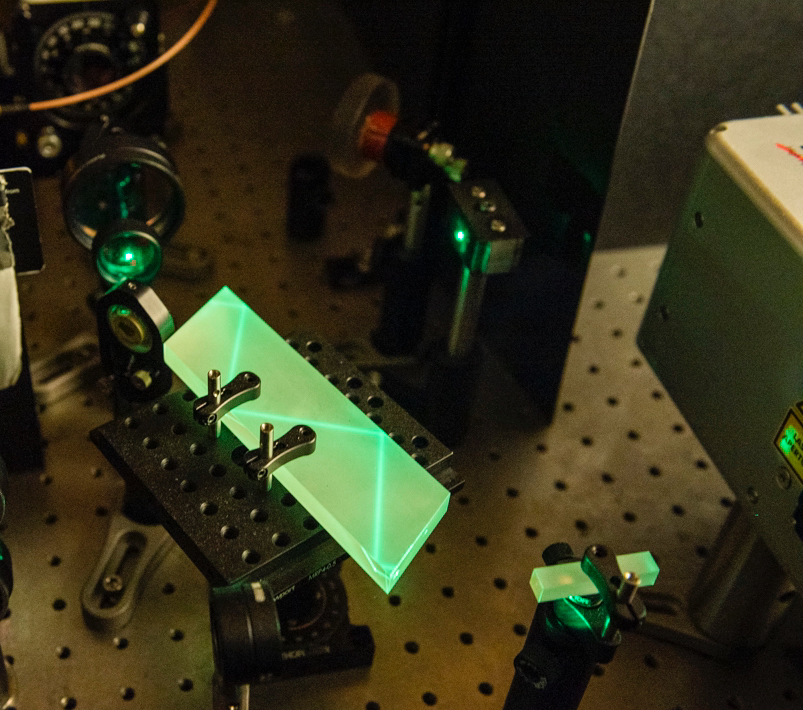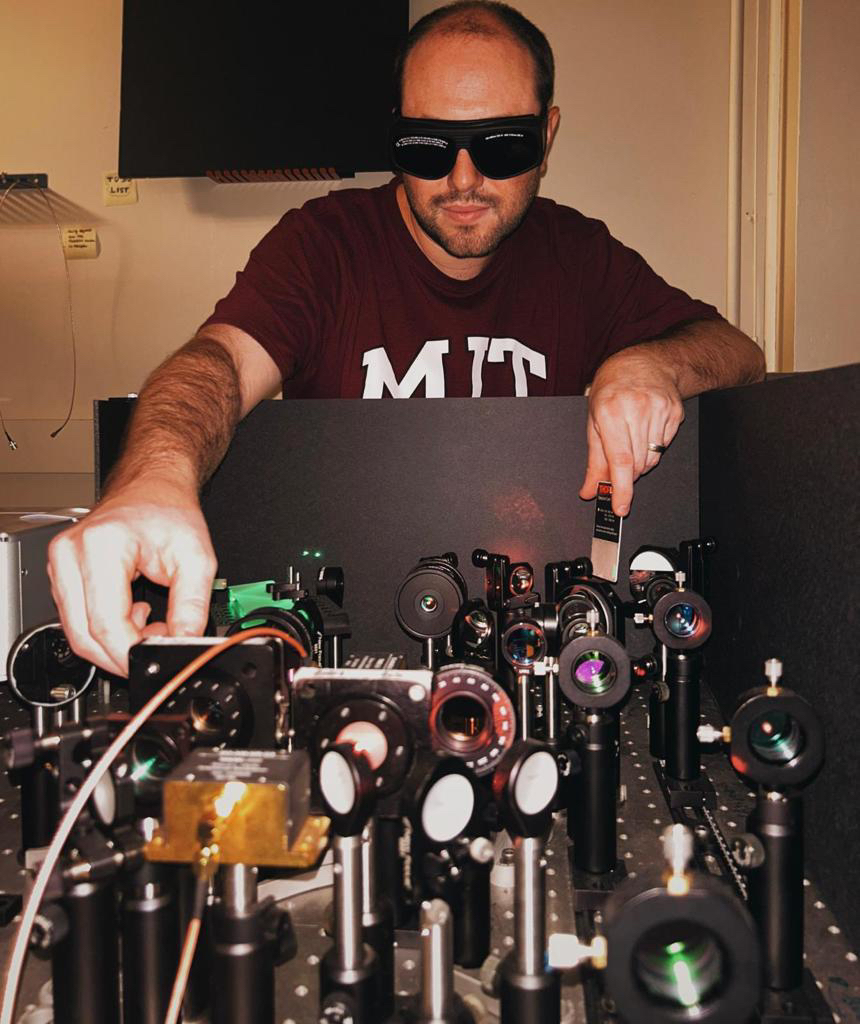Controlling quantum randomness

Experimental setup to generate tunable random numbers from vacuum fluctuations. Image: Courtesy of the researchers.

Tuning macroscopic probability distributions by biasing vacuum fluctuations.
(A and C) Fluctuation snapshot, Hamiltonian, and associated probabilities for an (A) unbiased and (C) biased bistable system. In (C), a vacuum-level bias field is injected in the cavity. (B) Schematic of quantum optical multistable system. (D) Stochastic amplitude trajectories for a biased optical parametric oscillator (OPO). One hundred trajectories are plotted in each graph, and time is normalized to the cavity lifetime tcav. (E) Probability of state α(1) as a function of bias intensity b. Image: Charles Roques-Carmes et al., Biasing the quantum vacuum to control macroscopic probability distributions. Science 381, 205-209 (2023).

Dr. Charles Roques-Carmes, one of the leaders of the research, adjusts the experiment setup. Image: courtesy of the researchers.

Dr. Yannick Salamin, one of the leaders of the research, adjusts the experiment setup. Image: courtesy of the researchers.

